
Managing Construction Projects 2E
¥ 78 1.3折 ¥ 587 九品
库存2件
作者Graham M. Winch 著
出版社Egmont
出版时间2010-04
版次1
印刷时间2010
装帧平装
货号89
上书时间2024-09-13
- 在售商品 暂无
- 平均发货时间 9小时
- 好评率 暂无
- 最新上架
商品详情
- 品相描述:九品
图书标准信息
- 作者 Graham M. Winch 著
- 出版社 Egmont
- 出版时间 2010-04
- 版次 1
- ISBN 9781405184571
- 定价 587.00元
- 装帧 平装
- 开本 大16开
- 纸张 胶版纸
- 页数 522页
- 【作者简介】
- Graham Winch is Professor of Project Management, Director ofthe Centre for Research in the Management of Projects, Director ofthe BP Managing Projects executive education programme and Head ofthe Decision Sciences and Operations Management Subject Area Groupat Manchester Business School, University of Manchester.
- 【目录】
-
Preface to 1st Edition.
Preface to 2nd Edition.
Part I Introduction.
1 The Management of Construction Projects.
1.1 Introduction.
1.2 Projects as the creation of new value.
1.3 The project as an information processing system.
1.4 Project management and the management of projects.
1.5 Projects and resource bases.
1.6 The five generic project processes.
1.7 Critiques of the first edition.
1.8 A theoretical perspective on managing constructionprojects.
1.9 A practical contribution to managing constructionprojects.
1.10 The plan of the book.
1.11 Summary.
Case 1 The Channel Fixed Link.
2 The Context of Construction Project Management.
2.1 Introduction.
2.2 The industry recipe for construction.
2.3 National business systems in construction.
2.4 The regulatory context.
2.5 The construction cycle.
2.6 The development of concession contracting.
2.7 Summary.
Case 2 The UK Construction Business System.
Further reading.
Part II Defining the Project Mission.
3 Deciding What the Client Wants.
3.1 Introduction.
3.2 From artefact to asset: facilities as new value.
3.3 Understanding spatial quality and business processes.
3.4 Indoor environmental quality and business processes.
3.5 Symbolic quality: beyond peer review.
3.6 Justifying the investment.
3.7 Strategic misrepresentation in investment appraisal.
3.8 Defining the project mission: a conceptual framework forproduct integrity.
3.9 Summary.
Case 3 Defining the Mission at the University of York.
Further reading.
4 Managing Stakeholders.
4.1 Introduction.
4.2 Which are the project stakeholders?
4.3 Mapping stakeholders.
4.4 The regulatory context.
4.5 Managing consent.
4.6 Ethics in project mission definition.
4.7 The role of visualisation.
4.8 Summary.
Case 4 The Rebuilding of Beirut Central District.
Further reading.
Part III Mobilising the Resource Base.
5 Forming the Project Coalition.
5.1 Introduction.
5.2 The principal/agent problem in construction.
5.3 Procuring construction services.
5.4 The formation of project coalitions.
5.5 Selecting resource bases.
5.6 Forming more effective project coalitions.
5.7 The development of e-procurement.
5.8 Probity in procurement.
5.9 Summary.
Case 5 Partnering Between Marks & Spencer and Bovis.
Further reading.
6 Motivating the Project Coalition.
6.1 Introduction.
6.2 The problem of moral hazard in construction projects.
6.3 The problem of switching costs.
6.4 Managing the problem of moral hazard.
6.5 Contractual uncertainty and risk allocation.
6.6 Governing the contract and the role of third parties.
6.7 The dynamic of adversarial relations.
6.8 Alliancing.
6.9 Summary.
Case 6 NHS ProCure 21.
Further reading.
7 Managing the Dynamics of the Supply Chain.
7.1 Introduction.
7.2 Horizontal and vertical governance.
7.3 Internal resource mobilisation.
7.4 Shirking.
7.5 The role of sequential spot contracting in constructionemployment.
7.6 Managing the supply chain.
7.7 Managing consortia and joint ventures.
7.8 The dynamics of supply chains.
7.9 Clustering the supply chain.
7.10 Summary.
Case 7 Building Down Barriers.
Further reading.
Part IV Riding the Project Life Cycle.
8 Minimising Client Surprise.
8.1 Introduction.
8.2 Projecting a perfect future.
8.3 Strategies for imagining the future: options thinking.
8.4 Moving from phase to phase: gating the process.
8.5 The gap analysis approach.
8.6 What do we mean by project success?
8.7 The nature of information flows in problem solving.
8.8 Process representation.
8.9 Knowledge management and learning from projects.
8.10 Summary.
Case 8 Riding the Life Cycle on the Glaxo Project.
Further reading.
9 Defining Problems and Generating Solutions.
9.1 Introduction.
9.2 Tame and wicked problems in the project process.
9.3 Solving the briefing problem.
9.4 Client organisation for briefing and design.
9.5 Solving the design problem.
9.6 The cult of wickedness.
9.7 The management of design.
9.8 Summary.
Case 9 Designing the Sheffield Arena.
Further reading.
10 Managing the Budget.
10.1 Introduction.
10.2 Levels of accuracy in project budgets.
10.3 Developing a budgetary system.
10.4 Using the PBS to control the budget.
10.5 Value engineering and cost management.
10.6 Constructability.
10.7 Controlling the budget.
10.8 Earned value analysis.
10.9 Mitigating optimism bias.
10.10 Budget overruns and escalating commitments.
10.11 Summary.
Case 10 The Centuria Project Budget.
Further reading.
11 Managing the Schedule.
11.1 Introduction.
11.2 Critical path method.
11.3 Resourcing the project.
11.4 The limitations of the critical path method.
11.5 New approaches to project scheduling.
11.6 The dynamics of the project schedule.
11.7 Summary.
Case 11 Centuria Project Schedule.
Further reading.
12 Managing Conformance.
12.1 Introduction.
12.2 The principles of quality management systems.
12.3 Inspection.
12.4 Quality control.
12.5 Quality assurance.
12.6 Integrated management systems for quality, environment, safetyand health.
12.7 Creating a culture of improvement.
12.8 Quality awards and self-assessment.
12.9 Conformance management in a project environment.
12.10 Standardisation and pre-assembly.
12.11 Summary.
Case 12 From Navvies to White Van Man: Managing Conformance atT5.
Further reading.
13 Managing Uncertainty and Risk on the Project.
13.1 Introduction.
13.2 Risk and uncertainty: a cognitive approach.
13.3 The elicitation of subjective probabilities.
13.4 Propensity for risk and uncertainty.
13.5 The practice of managing risk and uncertainty.
13.6 Managing opportunities and threats on projects.
13.7 The strategic management of project risk anduncertainty.
13.8 Summary.
Case 13 Managing Front-End Risks Through Networks: Boston CentralArtery/Tunnel.
Further reading.
14 Managing the Project Information Flow.
14.1 Introduction.
14.2 The principles of integrated project information.
14.3 The development of information and communicationtechnologies.
14.4 Engineering information management systems.
14.5 Enterprise resource management systems.
14.6 e-construction.
14.7 Project extranets.
14.8 The role of the project manager in managing projectinformation.
14.9 Summary.
Case 14 Building Information Modelling at One Island East.
Further reading.
Part V Leading the Project Coalition.
15 Designing Effective Project Organisations.
15.1 Introduction.
15.2 The rise of the project management concept.
15.3 Projects, programmes and portfolios.
15.4 The responsibilities of the client.
15.5 Who is the project manager?
15.6 Organising the project through the life cycle.
15.7 Project organisation in construction.
15.8 Determining the organisation breakdown structure.
15.9 Project teamworking.
15.10 Constructing the team.
15.11 Summary: project organisation design.
Case 15 Glaxo Project Organisation.
Further reading.
16 Infusing the Project Mission.
16.1 Introduction.
16.2 Appropriate leadership.
16.3 Leadership style.
16.4 Construction project leadership.
16.5 Resolving conflict on the project.
16.6 The levers of power.
16.7 Project culture and leadership.
16.8 Leading the construction project.
16.9 Summary: infusing the project mission.
Case 16 Patrick Crotty: Project Director on the WaterlooInternational Project.
16.10 The project life cycle.
16.11 Keeping control.
Further reading.
17 Conclusions: Managing Construction Projects Consummately.
17.1 Revaluing construction.
17.2 Managing for product integrity.
17.3 Managing for process integrity.
17.4 Construction as a manufacturing process.
17.5 Systems thinking and managing projects.
17.6 Professionalism and managing construction projects.
17.7 Judgement in managing construction projects.
17.8 Summary of the book.
17.9 A concluding thought.
Case 17 Tinker Bell Theory in Practice.
Further reading.
References.
People Index.
Project Index.
Subject Index.
相关推荐
-
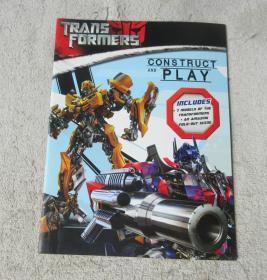
Transformers : construct and play
八五品北京
¥ 20.00
-

CREATE AND CONSTRUCT:SUPER STRUCTURES IN MIHECRAFT
九品阜阳
¥ 200.00
-

WALL CONSTRUCT1ON F1NISHING
八五品威海
¥ 30.00
-

Social Cognition How Individuals Construct Social Reality
九品北京
¥ 1280.00
-

CONSTRUCT THE COATING COLOR CARD(涂料色卡)
八五品佛山
¥ 100.00
-
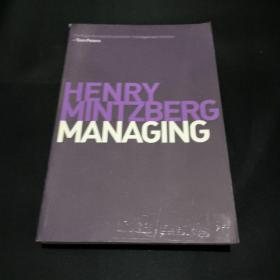
Managing
九品赣州
¥ 20.00
-
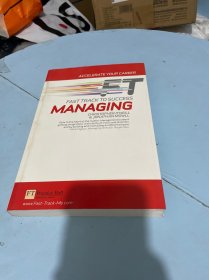
Managing
九品北京
¥ 80.00
-
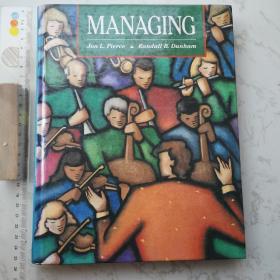
Managing
八五品济宁
¥ 200.00
-

价可议 How to Construct Rietveld Furniture nmwznwzn
九品亚洲
¥ 2510.00
-
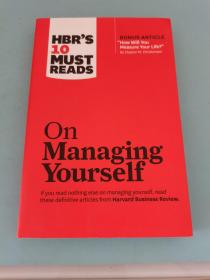
MANAGING YOURSEIF
九品上海
¥ 35.00
— 没有更多了 —























以下为对购买帮助不大的评价